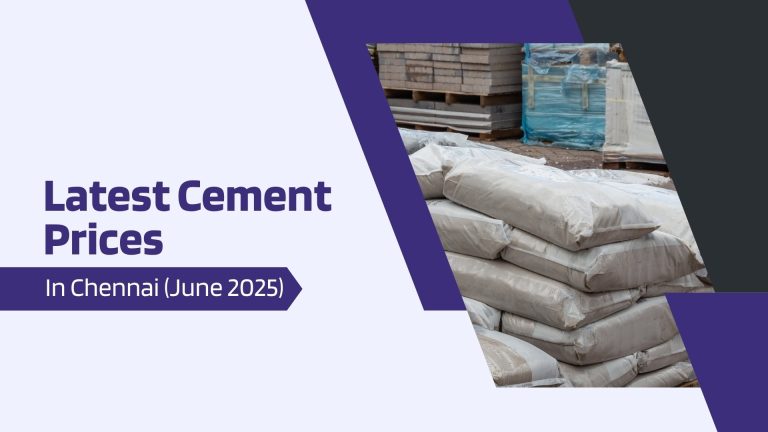Work Hours
Monday to Friday: 7AM - 7PM
Weekend: 10AM - 5PM
Types of Wall Cladding
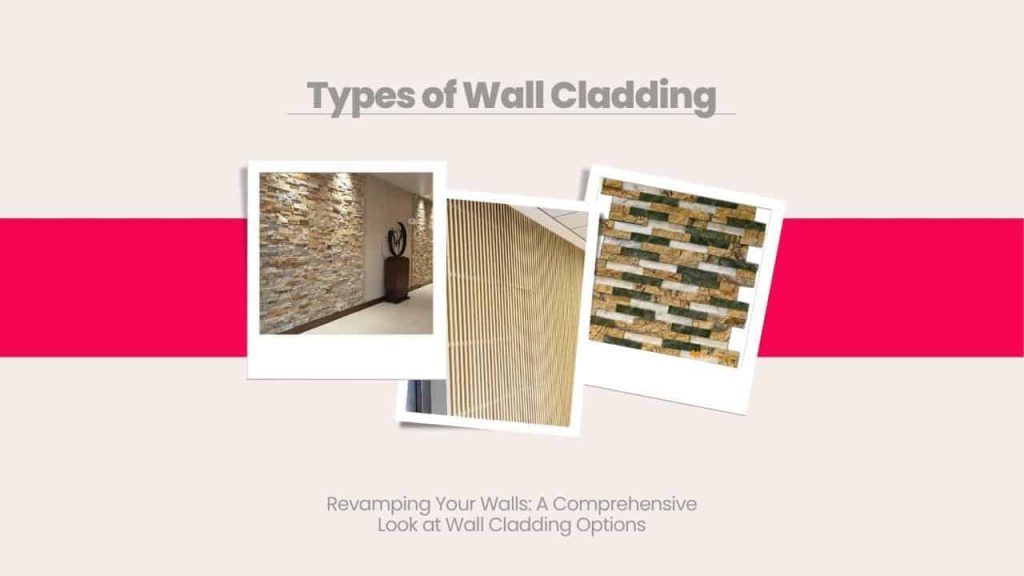
Wall cladding is a popular and effective way to enhance the appearance and durability of walls. There are several types of wall cladding available in the market, each with its own unique advantages. Whether you are looking for a low-maintenance option or a material that offers superior insulation, there is a wall cladding option that will suit your needs. In this blog, we will explore the different types of wall cladding and their advantages, helping you make an informed decision when it comes to selecting the right cladding for your home or building.
Builders use wall cladding to enhance the appearance and safeguard the interior or exterior walls of a building from environmental factors. Wall cladding materials vary, and they can be used to protect buildings from natural elements like rain, wind, and UV radiation while improving their aesthetic appeal.
Advantages of Wall Cladding
- Aesthetics: Wall cladding can improve the aesthetic appeal of a building by providing a variety of design options. This can increase the value of a property and make it more attractive to potential buyers or tenants.
- Protection: Wall cladding protects a building’s walls from environmental elements like rain, wind, and UV radiation, ensuring the longevity of the structure. It acts as a barrier, preventing moisture and other elements from penetrating the walls, which can lead to structural damage and higher maintenance costs. By protecting the walls, wall cladding also helps to maintain the building’s structural integrity, reducing the need for repairs and increasing its overall lifespan.
- Energy Efficiency: When it comes to improving a building’s energy efficiency, wall cladding can play a significant role. By providing insulation, wall cladding can help reduce heat loss, which ultimately results in lower energy bills and a more environmentally friendly building.
- Durability: Wall cladding materials have a durable and long-lasting quality, making them capable of withstanding harsh weather conditions and requiring low maintenance.
- Sound Insulation: Wall cladding can provide sound insulation, making it useful for reducing noise levels in areas near busy roads or airports. This feature can help to increase the comfort level of occupants within the building.
Types of Wall Cladding
1) Vinyl Wall Cladding
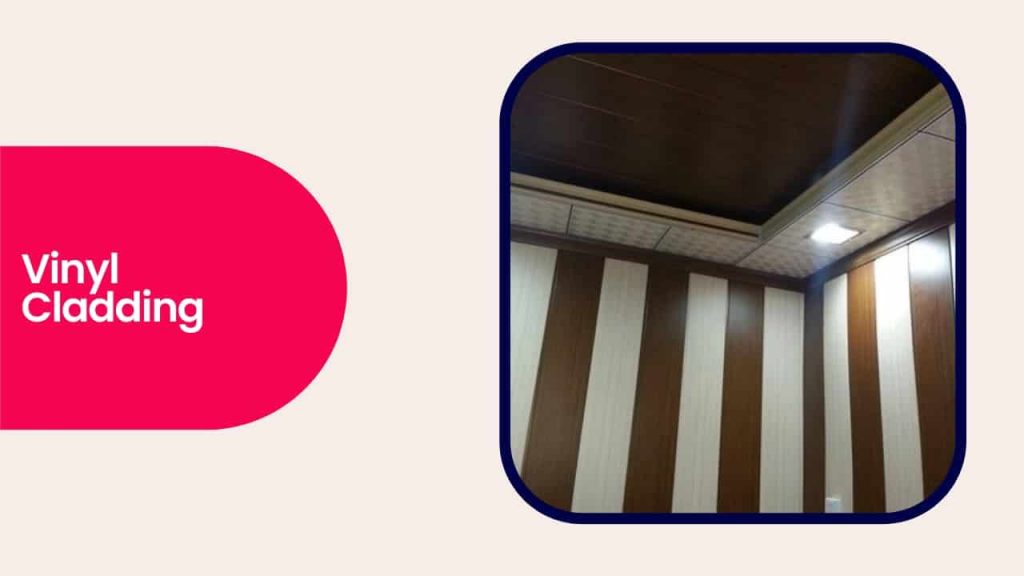
Vinyl cladding is a durable and popular material used for wall cladding that is made of polyvinyl chloride (PVC). It is available in different textures and colors, making it a versatile option for various building styles. Moreover, it is easy to install, requires low maintenance, and has a long lifespan, making it a cost-effective choice for many building projects.
2) Metal Wall Cladding
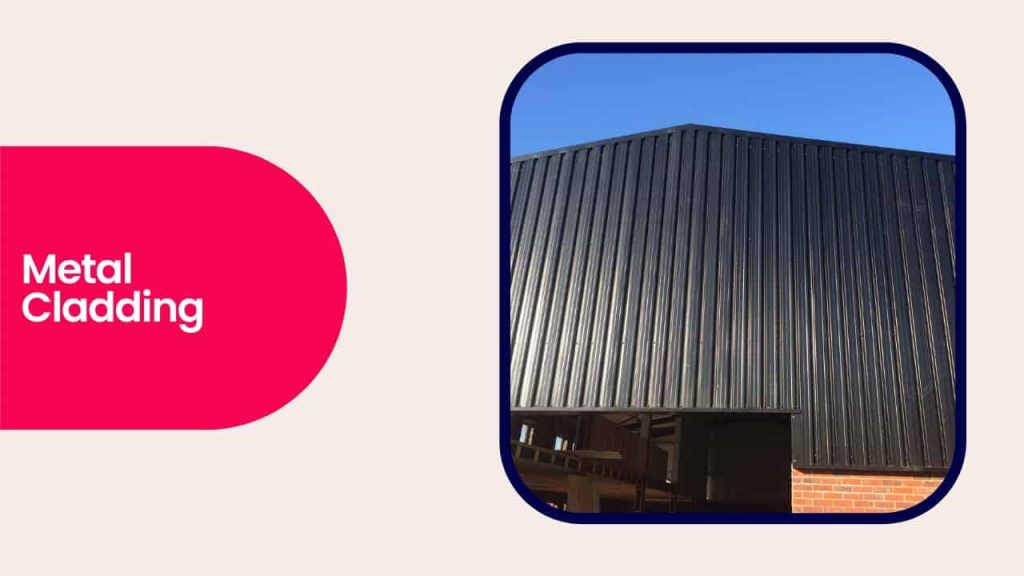
Metal cladding is a popular choice for creating a modern and sleek appearance for buildings. Materials such as aluminum, steel, and copper are commonly used for their durability, low maintenance requirements, and a wide range of colors and finishes. Metal cladding materials can provide an industrial aesthetic or a more refined look, depending on the design and finish chosen. They are also resistant to environmental elements such as rain and wind, making them a long-lasting and practical option for wall cladding.
3) Stone Wall Cladding
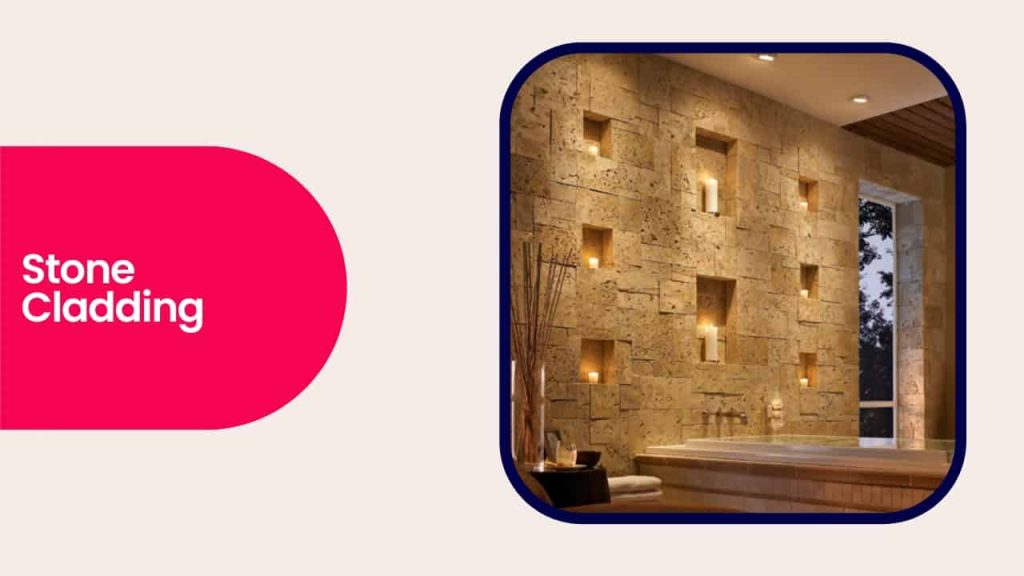
Stone cladding is a natural cladding material that provides a traditional or rustic appearance to a building. It is a durable material that requires low maintenance, making it a popular choice for many building projects. Stone cladding can be used to enhance the exterior of a building or to create a stunning interior feature wall. It is available in a wide range of colors and textures, and can be used to achieve a variety of design styles. Stone cladding is an excellent choice for those who want to add a touch of natural beauty to their building.
Also Read: Mostly Used Types of Flushing Doors
4) Brick Wall Cladding

This is a traditional cladding material that is made of clay and is used to provide a classic appearance to a building. It is durable, low maintenance, and provides good insulation.
5) Timber Wall Cladding
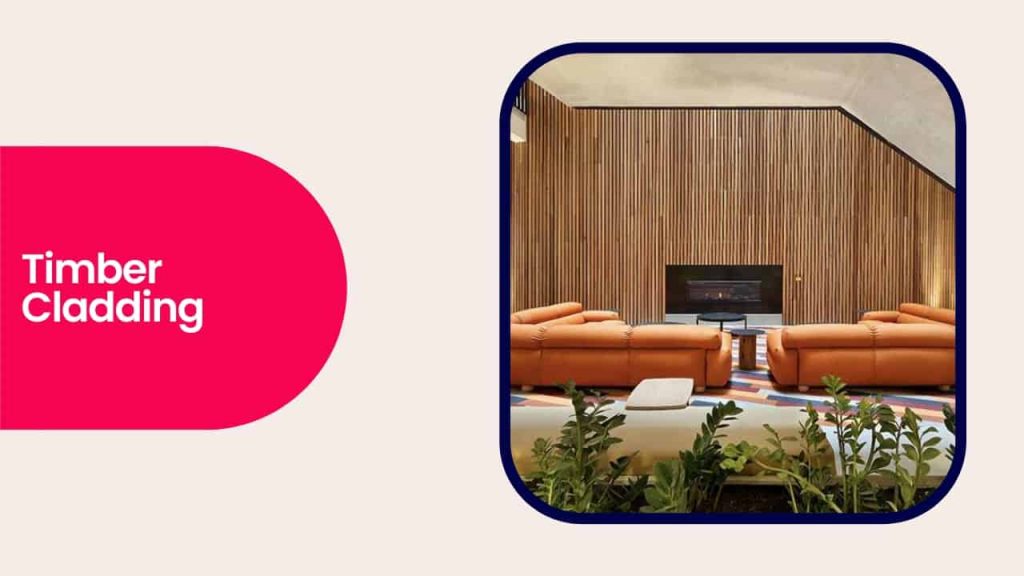
Timber cladding is a type of wall cladding that uses materials such as cedar, redwood, and pine to create a warm and natural appearance. It is durable, environmentally friendly, and renewable. Unlike other cladding materials, timber cladding can be easily maintained by regular cleaning and application of protective coatings. It is also an excellent insulator, which makes it suitable for energy-efficient buildings. However, timber cladding requires regular maintenance to prevent weathering and insect infestation.
Conclusion
In conclusion, wall cladding is an important aspect of building construction that enhances the appearance and protects the building from environmental elements. There are various types of wall cladding materials to choose from, each with its own advantages. From vinyl and metal to stone and timber, each material offers unique benefits such as durability, low maintenance, insulation, energy efficiency, sound insulation, and more. By choosing the right type of wall cladding material, property owners can not only improve the aesthetic appeal of their buildings but also increase their value and reduce their environmental impact.
Try Onsite, #1 Tool For Site Tracking


